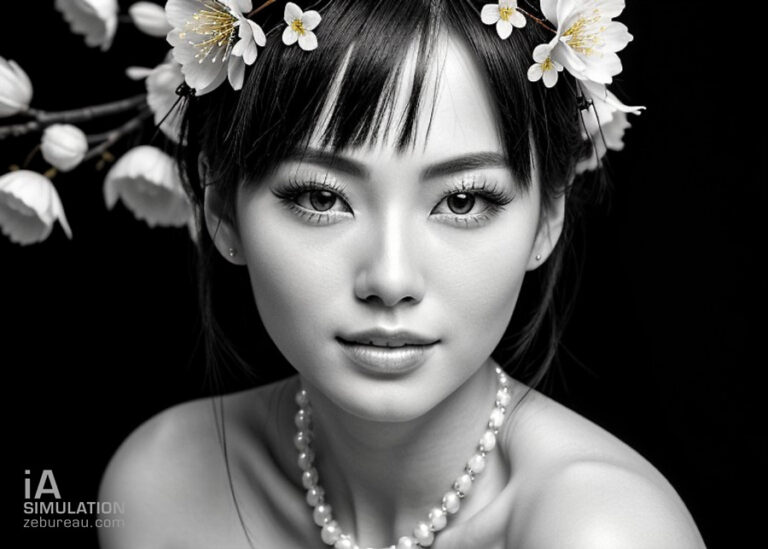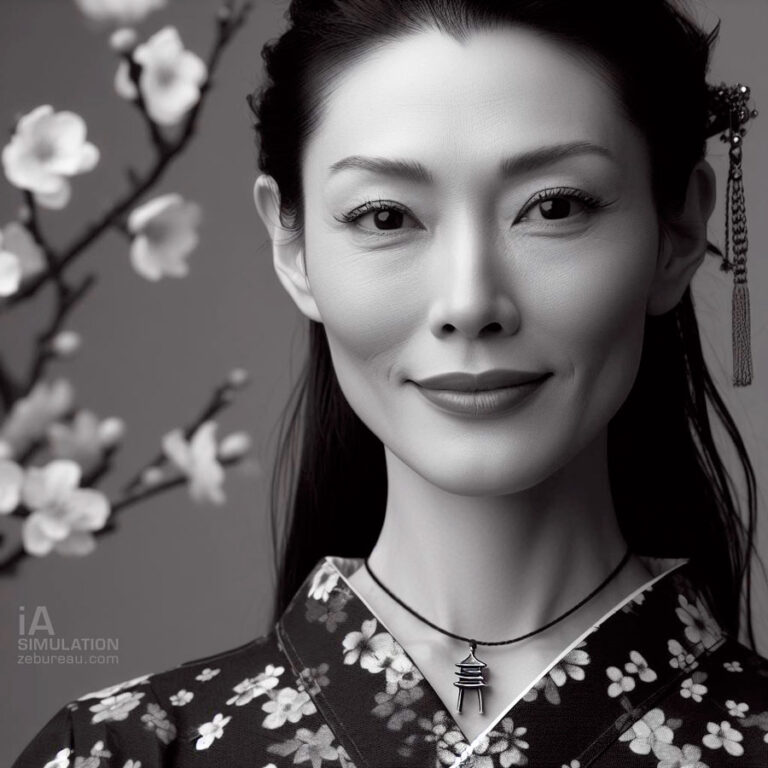
Associations organizing events or concerts sometimes need illustrations for their preferred communication media: flyers and posters.
Sometimes a limited budget can make it difficult to ask an illustrator to propose several different projects.
In response to this situation, we turned to artificial intelligence to produce a series of poster models based on AI-generated illustrations.
On a graphics tablet, we took it in turns to test the REMIX application on iOS, the AI Midjourney 6 via the Discord application, and Dalle-E via Microsoft’s Copilot application, to produce around a hundred illustrations!
An experiment proposed by Lyon-based creative studio A Kom Z.
The brief:
To create a flyer and poster, including an illustration, for a children’s choir anniversary concert.
Use AI to create illustrations with different styles

iA illustrator’s ABCs
The prompt (or text prompt) can be quite simple and descriptive, but can also be more or less detailed, depending on how much “creativity” you want to leave the AI.
In addition to listing the main elements to be included in the image, the most important thing is to guide the AI towards a particular style of illustration.
We’ll tell you about our experience in creating illustrations in the rest of this article, but first, here are the techniques we’ve tried out:
Our 6 keys to creating an illustration using AI
- Indicate a specific illustration technique: vector illustration, pen-and-ink, charcoal, pencil, watercolor, etc.
- Define an artistic style and/or universe for the overall rendering of the image: pop art, impressionism, cubism, manga, 2d, 3d, science fiction, abstract, etc.
- Use the name of a well-known artist, illustrator or painter.
- Add decisive qualifiers: colorful, monochrome, simple, complex, detailed, etc.
- Describe an emotion and/or a feeling to multiply the AI’s inventiveness: warm, inspiring, touching, sad, happy, …
- Suggest an image as a model for inspiration.
“Drawing with the REMIX AI aggregator
With REMIX (free application to download for iOS or Android), we can choose a rendering engine specialized in illustration and generate very different styles.
*Do not confuse REMIX AI with the Midjourney function of the same name, which allows you to rework an illustration.
1. Black and white comic-style illustrations
Our first idea to illustrate the children’s choir anniversary was to compose a joyful visual with singing faces.

With the REMIX AI, we generated various illustrations with the prompt: “very close-up on stylized faces of a children’s choir singing“.
To direct the artificial intelligence, we indicated an illustration style or, sometimes, the names of well-known illustrators.
For the latter, the results are variable, as not all illustrators have yet been “stolen” by the AIs…

Despite a few flaws, the illustrations look as if they’ve come straight from the pen of a real artist!
2. color illustrations, painting style
Our second idea was to generate more conceptual color illustrations.
With the prompt “very close-up, open mouths singing, open eyes, with musical notes all around” + indications of painters’ styles and names, we came up with colorful illustrations of varied inspiration.

Other attempts with the terms “stars”, “fireworks”, “musical notes” and various style indications produced numerous visuals that we didn’t retain.

3. Vector-style color illustrations
For our final tests generated with the IA Remix, we decided to change the visual and render the illustration with the prompt:
“minimalist vector illustration, clean design of golden stars amidst a midnight-blue sky, Saint-Exupéry style“
For some prompts, we also added “musical notes” and “treble clefs”.

In these 2 examples, having suggested “Saint-Exupéry” as inspiration in the prompt, we systematically obtain a small character (useless for our poster theme) that we can remove in post-production.
Creating clean illustrations with MidJourney 6
A paradigm shift with MidJourney, which remains the most advanced AI for illustration creation, as it boasts several visual editing features, in addition to the ability to provide it with its own images to inspire a style.

Using the same prompts as for REMIX, we were able to create the purest artistic visuals, suitable for concert and music festival posters.
With prompt:
“Minimalist illustration in solid color, shooting star with a ray of light surrounded by musical notes in a midnight blue sky, painter Miro style, shooting star with musical score filament, stave of notes, colored blue night“, we get a proposal strongly inspired by Miro.

Midjourney offers the possibility, as in this example, of modifying a specific area of the generated illustration, as well as increasing the size of the rendering area.
This provides greater control over the AI-assisted creation process.
See also our test of Midjourney for creating studio portraits.
DALLE-E, bad co-pilot of illustration?
With DALLE-E, via Microsoft’s Copilot application, we’re going to encounter enormous difficulties in producing images that respect the simplicity of our prompts.
And yet, when we tested DALLE-E for the production of photographs in a studio setting, it fared rather well in terms of comprehension.
This AI has decided to go for the eye-candy, despite using the same prompts as for REMIX or Midjourney.
DALLE-E will inexplicably add unsolicited characters or scenery, and we won’t be able to simplify the illustrations despite numerous attempts.

The pretty, overloaded illustrations obtained with DALLE-E (via Microsoft’s Copilot) were difficult to use for our project, as they proved impossible to simplify using the prompt’s patches. As for the illustration adding a nude woman, that was not part of our prompt at all!
See the similar “drifts” we encountered when testing the libertine AI Stable Diffusion.
After about 30 generated images, we try, as a last resort, to insist by writing our prompt in CAPITAL LETTERS.
Then the AI cuts us off by simply refusing to generate any further proposals in the active conversation!
Integrating illustrations into poster layouts
Concert poster mock-ups
The first step was to present 3 mock-ups with different layouts and visuals to “gauge” the customer’s expectations.

As the proposed visuals didn’t meet his expectations, we then submitted 3 new layouts with more streamlined illustrations, with the layout that had been retained.

The final concert poster
The customer wanted to avoid the childishness of some of the previous proposals, so a new direction was taken to generate our concert poster in Midjourney.

On the left, the Illustration generated by MidJourney 6 from an example found in an image bank. On the right, the final poster.
Review of the experience of creating poster illustrations with artificial intelligence
AI is not yet the magic wand capable of responding to precise layout composition requests.
But when it came to creating the visuals for a free-style music poster, it acquitted itself brilliantly.
A wide variety of styles
We appreciated the ability to quickly and easily generate a wide range of illustration proposals to meet customer requirements.
Very limited image resolution for print
For the moment, images are generated in resolutions of around 1024×1024 pixels (or sometimes double that with Midjourney, but with resampling).
Largely sufficient for Internet and office use, they may prove difficult to exploit in traditional printing for formats larger than A5.
More time spent than expected
When we thought we’d spend about 3 hours producing 3 layouts + the clean-up, we ended up spending… 3 times as long!
There are many reasons for this:
- Lack of knowledge of customer expectations.
- Difficulty in controlling and correcting AI results.
- The desire to experiment with several different AIs when Midjourney alone would have sufficed.
The need to retouch illustrations
Far from perfect, AI-generated illustration images often have flaws that can be overlooked at the mock-up stage, but which require significant photo retouching before they can be finalized.
Will artificial intelligence replace the illustrator?
It’s going to be a tough time for image-makers, whether in illustration or photography.

Creating illustrations in the traditional way is a time-consuming and demanding task, so being able to propose several projects with very different styles in a very short space of time quickly becomes a real challenge when faced with AIs.
With Artificial Intelligences, you don’t need any special skills to produce illustrations that would require years of drawing practice.
And you can put the work back on the easel as often as you like, because unlike an illustrator, they’ll never know the lack of time or the stress of an empty page…
See our other AI stories for generating studio photo portraits.
©The studios blog : external links to this article are authorised and appreciated, but any use of textual content or images from this site is subject to authorization.






